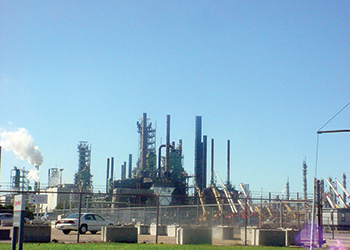
Since before the US shale oil boom began, Motiva Enterprises focused on the $10-plus billion expansion of its Texas refinery into the largest in the US.
The massive undertaking was fraught with setbacks, including having to basically start over in 2012 after corrosive chemicals ruined new pipes. Now, with that build out done, the joint venture of Royal Dutch Shell and Saudi Aramco is taking on another huge project with its Louisiana refineries.
Dan Romasko, the former Tesoro Corp operations head who took over as Motiva’s chief executive in February 2014, told Reuters that his first year was about improving performance and finding more ways to capture benefits of cheap crude from the shale revolution.
From 2007 to early this year, the Port Arthur, Texas expansion consumed most of Motiva’s discretionary spending and talent, Romasko said. That period also saw the shale boom take hold. Global demand for diesel fuel rose. US Gulf Coast refiners added hydrocrackers, increased distillate yields and turned the US into a net refined product exporter in 2011. Those developments led Motiva to turn its focus to the Louisiana plants.
"We saw the market dynamics associated with that, which really leaves Motiva with a basket of projects to capture those changes in the market that are quite substantial," Romasko said in his first interview as CEO.
Those include Motiva’s plans to expand a hydrocracker and diesel hydrotreater at the Texas plant and the integration of the company’s refineries in Convent and Norco, Louisiana, into a single 500,000 bpd complex, he said.
Motiva is not alone. Other projects are planned on the Gulf Coast, home to 40 percent of US refining capacity.
Romasko said the 235,000 bpd Convent plant has strong hydrotreating capability and ample sulphur capacity, but its gasoline-making fluid catalytic cracking (FCC) unit is weak.
The 238,000 bpd Norco plant has a strong FCC, but lacks capability to convert incoming light crude into processing components for the FCC.










































































